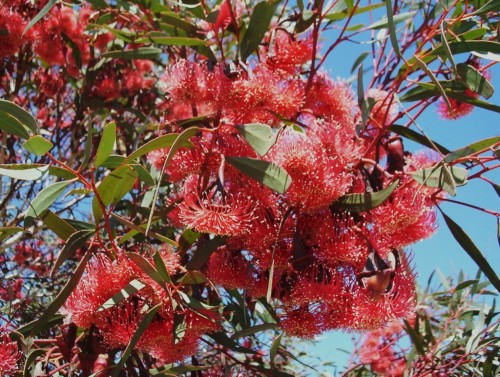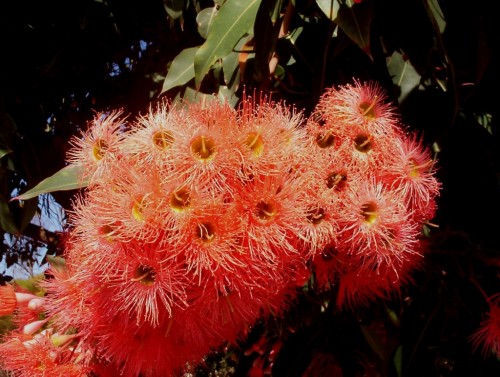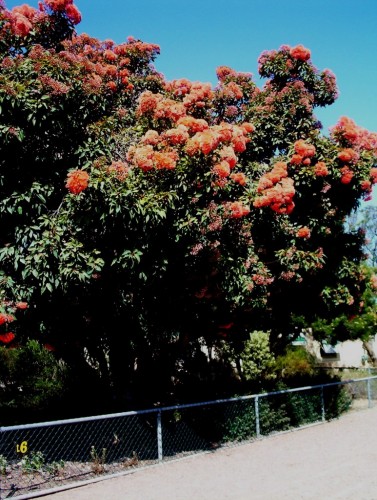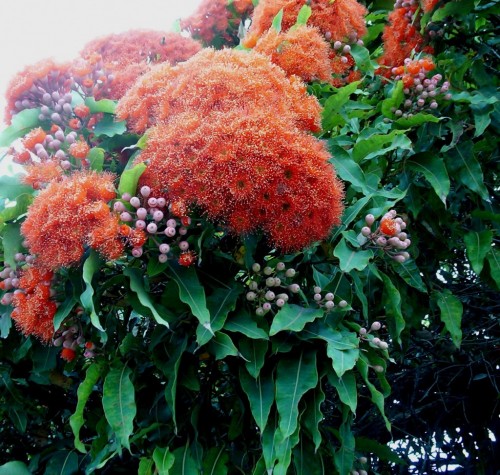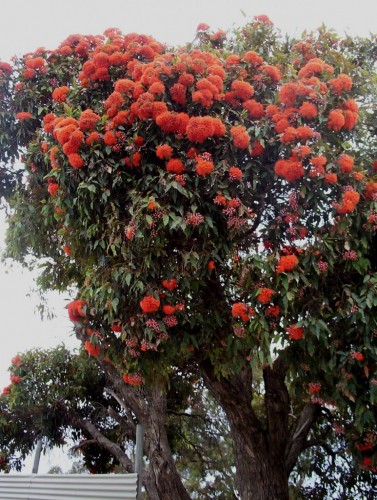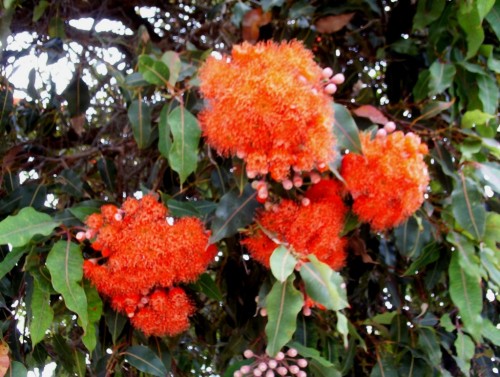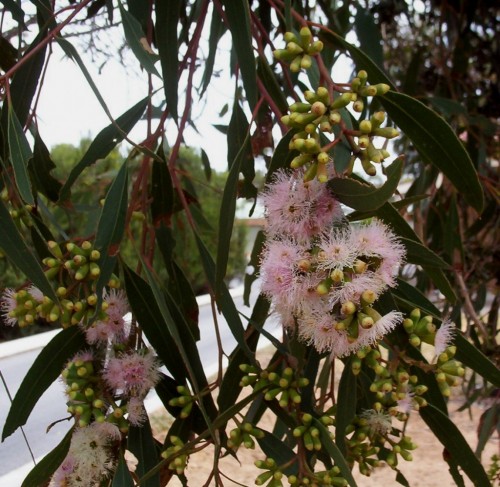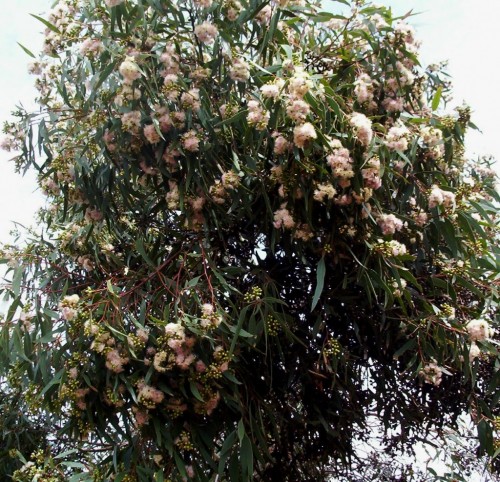Eucalyptus kingsmillii
We had Mistletoe birds nesting in one of the trees in the windbreak. It was the first native bird to nest in a tree which we had planted. After a storm one day I discovered that the neighbour had found the nest about to collapse and it had eggs in it. She found a stocking and slid a length of it over the nest and tied it securely to the tree. The birds continued to sit and raise the chicks.
Our plants have brilliant red flowers but apparently it is often yellow. They originate in very arid areas and need good drainage and a warm aspect. They are drought tolerant and moderately frost tolerant. Eucalyptus kingsmillii is highly suited to gardens, parks and roadside planting. It can be cut for floral decorations. Apparently this is a plant grown in California.
- A photo and article on Mistletoe Birds can be found here.
Eucalyptus ficifolia hybrid (Corymbia species)
This tree is obviously drought and frost hardy here and grows in alkaline soil, which breaks all the rules if the books are to be believed. The issue is, I think, that many species are quite adaptable and noone has the full story on all species. This tree is one of those. It has large fruits which are urn shaped and very decorative. Many use them for crafts and they are fun to create things with children.
Eucalyptus ficifolia (Western Australian Flowering Gum)
As the flowers continue to open on the Western Australian Flowering Gums (Eucalyptus ficifolia) I am taking photos of the different colour forms in the town. The correct name for this species is now Corymbia ficifolia. These are hardy trees to survive here with the hot dry summers, winter frost and limestone soils on most parts of the town.
This tree is 6-15 metres tall by 5-20 metres wide, flowering here from December to March. It is a tree like a mallee in that it has a lignotuber and if the trunk was cut off it would sprout multiple trunks from the lignotuber. However these trees have a nice single trunk with a dense canopy and of course the spectacular flowers.
The books say that this species is sensitive to alkalinity. It may be a little when first planted but seeing it growing here, it is a small tree less than 6 metres tall and that may well be the effect that alkalinity has on the growth in this area. Heavy frost is a problem in some areas.
Eucalyptus ficifolia (Western Australian Flowering Gum)
The colours range from deep dark red through vermillion, letter box red, orange, tangerine and shades in between and white. I haven’t seen pink but I believe there is that colour form also. This is one of the plants which, when grown from seed, cannot be guaranteed to give the colour required. Some clever people have been trying to graft Eucalypts and strike them also. I’ve read some articles on the techniques but have not had the inclination to try.
Eucalyptus calycogona (Square-fruited Mallee) Pink Form
As we drove in to the Retirement Village last week I saw this lovely mallee growing on the curb. When I got out of the car to take a photo, I realised that it was one of the colour forms of Eucalyptus calycogona, a very hardy small tree which often has a mallee form. The tree usually flowers in the winter- spring period so I was surprised to see the prolific flowering of this one. It is certainly an asset to have summer flowering native plants.
More information about this plant can be found here and here.
